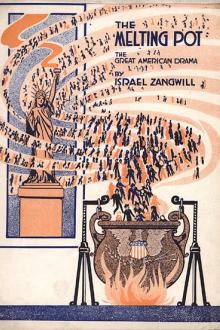The Way We Live Now, Anthony Trollope [good story books to read .txt] 📗

- Author: Anthony Trollope
Book online «The Way We Live Now, Anthony Trollope [good story books to read .txt] 📗». Author Anthony Trollope
The house itself had been built in the time of Charles II, when that which we call Tudor architecture was giving way to a cheaper, less picturesque, though perhaps more useful form. But Carbury Manor House, through the whole county, had the reputation of being a Tudor building. The windows were long, and for the most part low, made with strong mullions, and still contained small, old-fashioned panes; for the squire had not as yet gone to the expense of plate glass. There was one high bow window, which belonged to the library, and which looked out on to the gravel sweep, at the left of the front door as you entered it. All the other chief rooms faced upon the garden. The house itself was built of a stone that had become buff, or almost yellow with years, and was very pretty. It was still covered with tiles, as were all the attached buildings. It was only two stories high, except at the end, where the kitchens were placed and the offices, which thus rose above the other part of the edifice. The rooms throughout were low, and for the most part long and narrow, with large wide fireplaces and deep wainscotings. Taking it altogether, one would be inclined to say, that it was picturesque rather than comfortable. Such as it was its owner was very proud of it—with a pride of which he never spoke to anyone, which he endeavoured studiously to conceal, but which had made itself known to all who knew him well. The houses of the gentry around him were superior to his in material comfort and general accommodation, but to none of them belonged that thoroughly established look of old county position which belonged to Carbury. Bundlesham, where the Primeros lived, was the finest house in that part of the county, but it looked as if it had been built within the last twenty years. It was surrounded by new shrubs and new lawns, by new walls and new outhouses, and savoured of trade;—so at least thought Roger Carbury, though he never said the words. Caversham was a very large mansion, built in the early part of George III’s reign, when men did care that things about them should be comfortable, but did not care that they should be picturesque. There was nothing at all to recommend Caversham but its size. Eardly Park, the seat of the Hepworths, had, as a park, some pretensions. Carbury possessed nothing that could be called a park, the enclosures beyond the gardens being merely so many home paddocks. But the house of Eardly was ugly and bad. The Bishop’s palace was an excellent gentleman’s residence, but then that too was comparatively modern, and had no peculiar features of its own. Now Carbury Manor House was peculiar, and in the eyes of its owner was preeminently beautiful.
It often troubled him to think what would come of the place when he was gone. He was at present forty years old, and was perhaps as healthy a man as you could find in the whole county. Those around who had known him as he grew into manhood among them, especially the farmers of the neighbourhood, still regarded him as a young man. They spoke of him at the country fairs as the young squire. When in his happiest moods he could be almost a boy, and he still had something of old-fashioned boyish reverence for his elders. But of late there had grown up a great care within his breast—a care which does not often, perhaps, in these days bear so heavily on men’s hearts as it used to do. He had asked his cousin to marry him—having assured himself with certainty that he did love her better than any other woman—and she had declined. She had refused him more than once, and he believed her implicitly when she told him that she could not love him. He had a way of believing people, especially when such belief was opposed to his own interests, and had none of that self-confidence which makes a man think that if opportunity be allowed him he can win a woman even in spite of herself. But if it were fated that he should not succeed with Henrietta, then—so he felt assured—no marriage would now be possible to him. In that case he must look out for an heir, and could regard himself simply as a stopgap among the Carburys. In that case he could never enjoy the luxury of doing the best he could with the property in order that a son of his own might enjoy it.
Now Sir Felix was the





Comments (0)